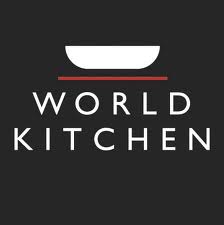- YES…It is Really Possible to Create a One Number Forecast. Are you tired of everyone second guessing your forecast? No one believes the number…..and why should they? There are multiple variations of your forecast floating around the company. Finance has one, sales has one, marketing too! It is ok for people to have different perspectives on what the forecast should be and why, but how do you reach consensus? Which number drives supply planning, inventory planning and production? How do you develop a financial forecast to determine net sales, earnings projections and cash flow with so many “forecasts” in play?
Many companies struggle with this. They have the latest forecasting software, utilize statistical modeling techniques, gain retailer market intelligence and use syndicated data wherever possible to develop the best forecast with the ultimate goal of having the right inventory in house when the customer decides to order. Even with all this, they fail to gain alignment and consensus within the organization on the forecast.
Not too long ago, World Kitchen LLC was one of those companies. With leadership support we developed a process that utilizes cross-functional sales collaboration using an account/ channel forecasting approach that integrates retailer data and promotes joint business planning. We have a one number, bottoms-up global process across the company. Account/ channel unit forecasts are dollarized into one consensus sales forecast that is jointly owned by Sales and Demand Planning, thereby eliminating multiple forecasts being developed within each functional area. Through a monthly S&OP process we gain consensus on a bottoms-up, One Number forecast that drives both the supply chain operation and the financial commitments of the company.
SOME KEY POINTS OF THE PROCESS INCLUDE:
- Global account/channel unit forecasts are dollarized into one consensus sales forecast. The forecast is jointly owned by Sales and Demand Planning with input from marketing and finance, eliminating multiple forecasts being developed within each functional area.
- Utilization of Retailer Data as a primary input in the forecasting process. This includes Point of Sale (POS), Customer Inventory, Customer In-stock levels, Points of Distribution, etc.
- Use of a formal Gap Closure process with sales to better understand unconfirmed opportunities. This data supports closing the gap to budget as well as offering visibility of opportunities to supply planning.
- Formal monthly consensus meetings with Brand Marketing, Finance, Category, Customer Marketing, Supply Planning, Sales and Demand Planning. Meetings led by Demand Planning/Sales. Interactive meetings to review year to date performance, gaps to last forecast cycle, gaps to budget, gap closures, forecast error/bias and fill rate (service levels).
- Monthly S&OP meeting with Executive Team/Leadership to review Operations (both manufacturing and sourcing), Inventory and Sales forecast. Review metrics for key areas.
So, YES, you can develop a One Number forecast. Of course, this forecast will change over time and it is the cross functional collaboration throughout the process that makes this work.
See us share more on this topic at IBF’s Supply Chain Planning & Forecasting: Best Practices Conference in Orlando on October 22-24, 2012. We’re speaking at the IBF event!
Donna Roe
Director, Demand Planning and Replenishment
World Kitchen
Josh Mlynarcik
Demand Planning Manager
World Kitchen



